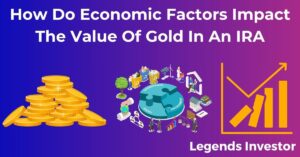Introduction to Inflation and Investment
Inflation is a persistent rise in the general price level of goods and services over time, leading to a decline in the purchasing power of money. For investors, inflation poses a unique challenge: the need to ensure that their portfolio grows at a rate that outpaces inflation. This requires a strategic approach to investment, particularly during periods of economic uncertainty. Understanding how various assets respond to inflation can help investors safeguard their wealth and achieve financial goals.
In this article, we will explore the role of precious metals as a hedge against inflation, their historical significance, and strategies for incorporating them into an investment portfolio.
What Are Precious Metals?
Precious metals are naturally occurring metallic elements that have high economic value. Examples include gold, silver, platinum, and palladium. These metals have been treasured for centuries due to their rarity, durability, and unique properties. They are widely used in industries, jewelry, and as a store of value.
Historical Significance
Gold and silver have been used as currency and a medium of exchange for thousands of years. Even today, they are considered a reliable store of value, especially during economic downturns or periods of high inflation. Platinum and palladium, though less recognized historically as currency, play significant roles in industrial applications, which adds to their value.
Physical and Chemical Properties
The intrinsic value of precious metals is supported by their physical and chemical properties, such as:
- Durability: Resistance to tarnish and corrosion.
- Malleability: Easy to shape and work with.
- Conductivity: High thermal and electrical conductivity, especially for gold and silver.
Precious Metals and Inflation: Understanding the Relationship
Precious metals have long been seen as a hedge against inflation due to their ability to retain value over time. Unlike fiat currencies, whose purchasing power diminishes during inflationary periods, precious metals often experience a rise in demand.
Historical Performance During Inflation
Gold and silver, in particular, have demonstrated resilience during inflationary periods. For instance, during the 1970s, when inflation rates in the United States were exceptionally high, gold prices skyrocketed, providing a safe haven for investors.
Correlation with Inflation Rates
There is a well-established correlation between precious metal prices and inflation rates. As inflation rises, the demand for assets that preserve purchasing power also increases, driving up the prices of precious metals.
Intrinsic Value
Precious metals are considered to have intrinsic value because they are tangible assets with a limited supply. Unlike paper money, which can be printed in unlimited quantities, the scarcity of precious metals contributes to their appeal as a hedge against inflation.
Evaluating Precious Metals as a Hedge Against Inflation
Investors often turn to precious metals as a way to protect their portfolios from inflation. Here, we analyze their effectiveness compared to other inflation-hedge assets.
Historical Data and Trends
Gold has consistently outperformed during periods of high inflation, often serving as a “crisis commodity.” Silver, while more volatile, has also provided protection against inflationary pressures. Platinum and palladium, though influenced by industrial demand, have shown mixed performance in such scenarios.
Comparison with Other Assets
Precious metals are often compared with other inflation-hedge assets like real estate, Treasury Inflation-Protected Securities (TIPS), and commodities. While these assets have their advantages, precious metals offer unique benefits due to their global appeal and ease of liquidity.
Risks
Investing in precious metals is not without risks. Price volatility, storage costs, and market manipulation are some concerns investors need to consider. Additionally, precious metals do not generate income like dividends or interest, which can be a disadvantage for some portfolios.
Factors That Influence Precious Metal Prices
The value of precious metals is determined by a variety of factors, including:
Supply and Demand Dynamics
The availability of precious metals is limited by mining production. As demand increases, prices tend to rise, particularly when supply is constrained.
Mining Costs and Production Levels
The cost of extracting precious metals from the earth impacts their market price. Higher production costs can lead to increased prices.
Macroeconomic Indicators and Geopolitical Events
Economic data, such as interest rates and inflation reports, influence precious metal prices. Geopolitical tensions, such as wars or trade disputes, also drive demand for safe-haven assets like gold.
Pros and Cons of Investing in Precious Metals
Advantages
- Diversification: Precious metals help reduce overall portfolio risk by offering an asset class uncorrelated to stocks and bonds.
- Liquidity: Precious metals can be easily bought and sold in global markets.
- Inflation Protection: Their ability to retain value makes them a reliable hedge.
Disadvantages
- Storage and Insurance Costs: Physical metals require secure storage and insurance.
- Price Volatility: Precious metals can experience significant price fluctuations.
- No Income Generation: Unlike stocks or bonds, precious metals do not provide dividends or interest.
Alternative Ways to Invest in Precious Metals
Investors can choose from various methods to gain exposure to precious metals:
Physical Metals
Buying gold, silver, platinum, or palladium in the form of coins, bars, or bullion offers direct ownership.
Precious Metal ETFs and Stocks
Exchange-traded funds (ETFs) and mining stocks provide exposure without the need for physical storage. ETFs track the price of metals, while mining stocks depend on company performance.
Futures Contracts and Options
These derivative instruments allow investors to speculate on the future price of precious metals. They involve higher risk but offer the potential for significant returns.
Digital Gold and Fintech Innovations
Technological advancements have led to the creation of digital gold platforms and metal-backed cryptocurrencies, offering convenience and accessibility.
Expert Insights: What Financial Advisors Say
Testimonials and Advice
Financial advisors often recommend precious metals as part of a diversified portfolio. They emphasize the importance of allocating a small percentage of assets to precious metals to hedge against inflation and economic uncertainty.
Common Misconceptions
Some investors mistakenly believe that precious metals are a “guaranteed” way to grow wealth. Advisors caution that while they are a good hedge, they are not immune to market risks.
Advice for First-Time Investors
Begin with a small allocation and gradually increase exposure as you gain experience. Conduct thorough research and consult professionals to make informed decisions.
Conclusion: Making an Informed Decision
Precious metals can play a vital role in protecting against inflation and diversifying your portfolio. However, they should be approached with careful planning and research. Investors must consider factors like market conditions, personal financial goals, and risk tolerance when incorporating precious metals into their investment strategy.
By leveraging tools and resources, staying informed about market trends, and consulting financial professionals, you can make prudent decisions to safeguard your wealth and achieve financial stability.



